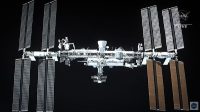
Who Owns the Moon?
Once upon a time, outer space, like the air and seas, was one of the global commons, held jointly for all of humanity. But great power competition, a deficit of rules, and a booming private space economy are eroding that status. The new cold war between the United States and nations such as Russia and China is extending to the cosmos: NATO has declared space an “operational domain”. And like the old Cold War, the new one poses a threat to life on Earth itself, from the dangers of space debris to the possibility of targeting satellites in an already-crowded Low Earth Orbit (an orbit around the Earth at 1,200 miles or less) that so much of modern life is dependent upon.… Seguir leyendo »





